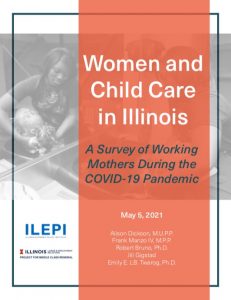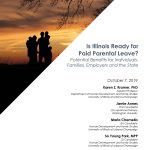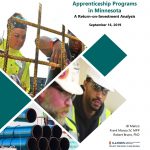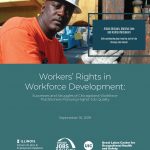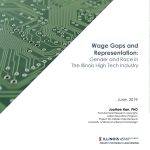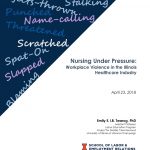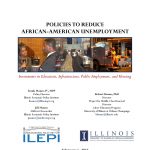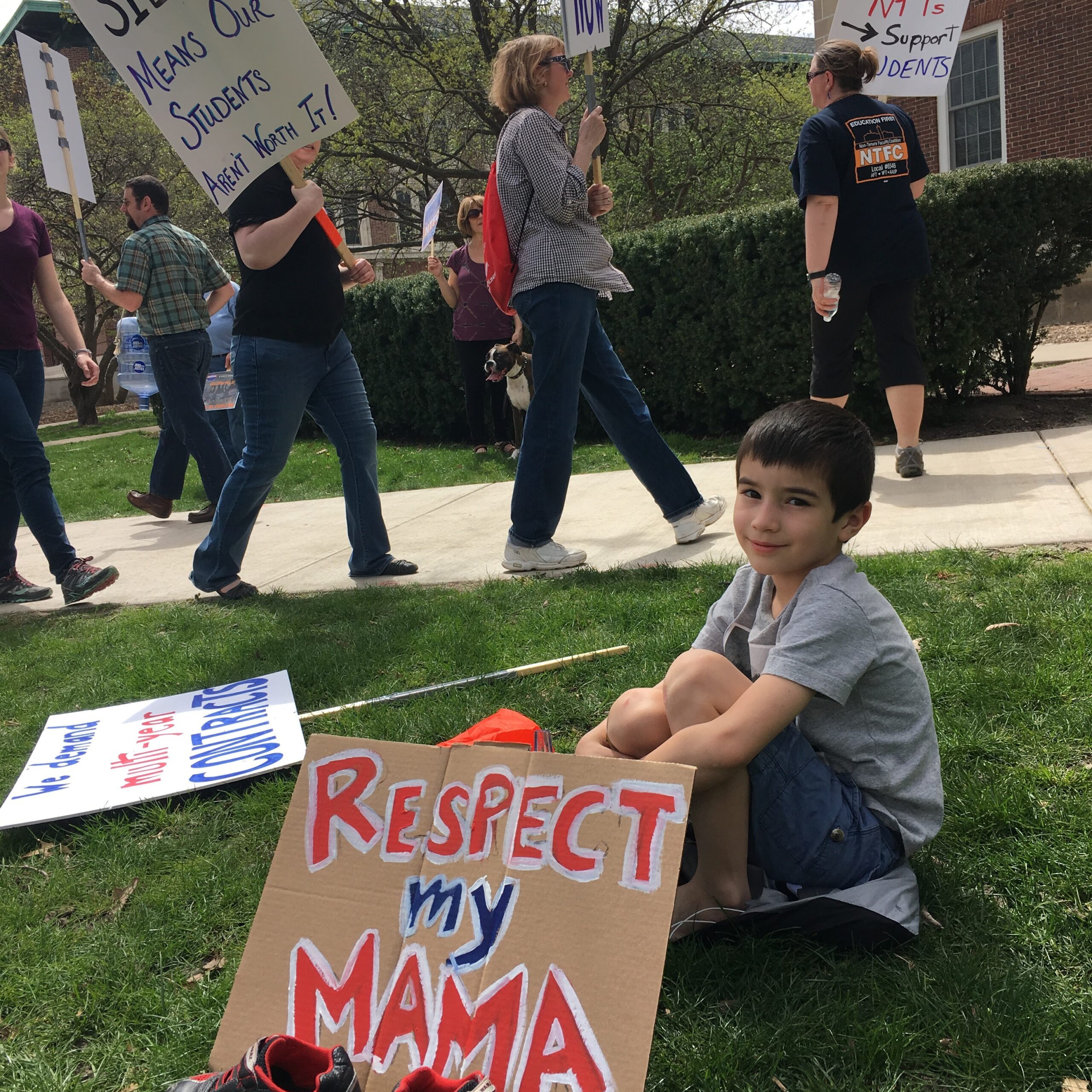
RACE, GENDER, AND LABOR
Benefits of Recurring Tax Credit Payments | Lessons from the Chicago EITC Periodic Payment Pilot and Implications for Illinois
Executive Summary: The Biden Administration’s American Rescue Plan Act (ARP), passed in early 2021, is designed to respond to the immediate economic needs of the millions of Americans who have been impacted by the economic fallout of the COVID-19 pandemic. This report considers one aspect of the ARP: the expansion of the Child Tax Credit (CTC), which provides a temporary income boost to parents with dependent age children (under 18 years old). The expanded CTC is also the first time the federal government has opted to deliver a portion of the tax credit via monthly payments instead of delivering it all in a lump sum annually.
Women and Child Care in Illinois: A Survey of Working Mothers During the COVID-19 Pandemic
The COVID-19 pandemic has disrupted economic and educational systems. The economic downturn caused by the pandemic has had substantial and potentially long-term implications for women, with their labor force participation rate falling to its lowest level in three decades. Additionally, following the advice of public health experts, Illinois restricted face-to-face activities and closed in-person schools and daycare facilities, exacerbating the existing child care crisis.
From Birth through Young Adulthood: Reforming Illinois Tax Policy for Economic Security and Racial Equity
The tax code is a powerful tool used to address a myriad of policy goals. Unfortunately, instead of narrowing income and wealth gaps, various tax provisions continue to reinforce historical gender and racial biases in the tax code. Some advocates argue that the Earned Income Tax Credit (EITC) and the refundable portion of the Child Tax Credit (CTC) are exceptions to the generally inequitable tax system, as these credits provide substantial support to low- and moderate-income families. Illinois has a role to play in addressing the gender and racial inequities in the tax and revenue system. This policy report outlines reforms to the Illinois tax code that would provide tax relief to Illinois parents with young children, and young adults who are at the beginning of their career. It directs addition to how changes could impact racial tax equity in Illinois
IS ILLINOIS READY FOR PAID PARENTAL LEAVE? POTENTIAL BENEFITS FOR INDIVIDUALS, FAMILIES, EMPLOYERS, AND THE STATE
Studies on paid parental leave (PPL) in Europe and, more recently, in the United States, suggest that PPL offer many benefits for children and families and even to employers. In this report we suggest that offering PPL to Illinoisans may also benefit the state of Illinois by situating it as the most family-friendly state in the Midwest. We review past research on the benefits of PPL to different stakeholders and suggest that offering PPL to Illinoisans might invigorate Illinois’ population growth by both decreasing the migration of young families out of Illinois and increasing the migration of such families to Illinois.
THE IMPACT OF CONSTRUCTION APPRENTICESHIP PROGRAMS IN MINNESOTA: A RETURN-ON-INVESTMENT ANALYSIS
Construction is the 3rd fastest growing industry in Minnesota. Over the next decade, construction employment is projected to expand by 9 percent in Minnesota, and 7-in-10 contractors already report difficulties in filling skilled craft positions. For many young Minnesota workers, enrolling in a registered apprenticeship program is a better option than attending college. Construction apprenticeship programs have positive impacts on Minnesota. The programs support workers by improving their skills and growing incomes. The programs also help employers address skills shortages by supplying safe, productive workers. Funded almost entirely by a cents per hour contribution from employers and administered jointly with unions, apprenticeship programs in construction also provide value to taxpayers by ensuring high-quality infrastructure and a strong economy.
WORKERS’ RIGHTS IN WORKFORCE DEVELOPMENT: SUCCESSES AND STRUGGLES OF CHICAGOLAND WORKFORCE PRACTITIONERS PERSUING HIGHER JOB QUALITY
PMCR, in collaboration with Chicago Jobs Council and UIC’s Great Lakes Center for Occupational Health and Safety are excited to share findings from their survey of Chicagoland workforce providers who are actively educating their participants about their rights on the job and pursuing collaborations with high road employers. Through connecting workers’ rights education to job readiness programming, educating staff and community partners about labor laws and resources, and by using good jobs tools and metrics to rate potential employer partners, Chicago workforce development professionals are on the frontline of educating and protecting the region’s most at-risk workers.
WAGE GAPS AND REPRESENTATION: GENDER AND RACE IN THE ILLINOIS HIGH TECH INDUSTRY
A new PMCR report by Dr. Han (Post-Doctoral Research Associate), “Wage Gaps and Representation: Gender and Race in The Illinois High Tech Industry” examines Illinois tech workers’ employment and wages across gender and race groups in three core tech occupations: executives, managers, and professionals as a first step to increasing the diversity of Illinois’ tech workforce. The workforce in Illinois’ tech industries is predominantly male and white, particularly in upper core tech occupational ranks (executives, managers, and professionals). In the last decade, the workforce diversity has not changed except for two groups: an increasing proportion of women – mostly white – hold managerial positions and an increasing proportion of non-white employees, mostly male, hold professional occupations. Despite such changes the gender pay gap exists in all three core occupations and the race pay gap is clearly evident among executives. Combined together, women and minorities are not only underrepresented in tech but they are also paid less than white men. The stagnant gender pay gaps and underrepresentation of women and minorities suggest that the gaps will likely persist in the future unless there are strong interventions. Based on studies, firm adoption of “count and compare” practices should be required to monitor gender-race diversity hiring and pay equity.
NURSING UNDER PRESSURE: WORKPLACE VIOLENCE IN THE ILLINOIS HEALTHCARE INDUSTRY
Among those in the healthcare industry, it is common knowledge that threats of violence ranging from verbal to physical to sexual abuse come with the territory. In fact, according to the Bureau of Labor Statistics (BLS) healthcare and social assistance industries are “the most common sources of nonfatal injuries and illnesses requiring days away from work.” (Wolf et al, 2014, 305) Yet, there is surprising lack of data that reveals the rates of violence and how frontline workers, such as nurses, believe the industry should be responding. In this study of 276 Illinois nurses, we uncover that 90% of surveyed nurses experience at least one episode of workplace violence in a twelve month period with 50% of nurses experiencing six or more episodes of workplace violence in a year. This survey explores the depth of the violence and makes policy recommendations to work towards a more comprehensive set of workplace policies that could both lower workplace violence as well as improve employer responses to violence.
POLICIES TO REDUCE AFRICAN-AMERICAN UNEMPLOYMENT
The City of Chicago is experiencing extremely high rates of African-American unemployment compared to the rest of the nation. This report, conducted by researchers at the Illinois Economic Policy Institute and the Project for Middle Class Renewal at the University of Illinois at Urbana-Champaign, seeks to understand the causes of high African-American unemployment in Chicago and other urban areas across the United States. It offers seven public policies and economic phenomena that make a difference in lowering the African-American unemployment rate.
ADVANCING CONSTRUCTION INDUSTRY DIVERSITY: A PILOT STUDY OF THE EAST CENTRAL AREA BUILDING TRADES COUNCIL
The importance of the construction trades and apprenticeship programs as a unique and unparalleled pathway into middle class job opportunities for non-college graduates, inspired the Project for Middle Class Renewal in the Labor Education Program (LEP) at the University of Illinois’ School of Labor and Employment Relations to invite building trades’ apprenticeship programs to participate in a pilot diversity study. The study was designed to determine not only levels of access and involvement in the apprentice building trades by minority and female workers, but also to recommend practices that would enhance inclusivity in the industry. The goal was to address the question of how to make the “apprentice-able” construction trades the preferred labor force for both white and non-white workers.

